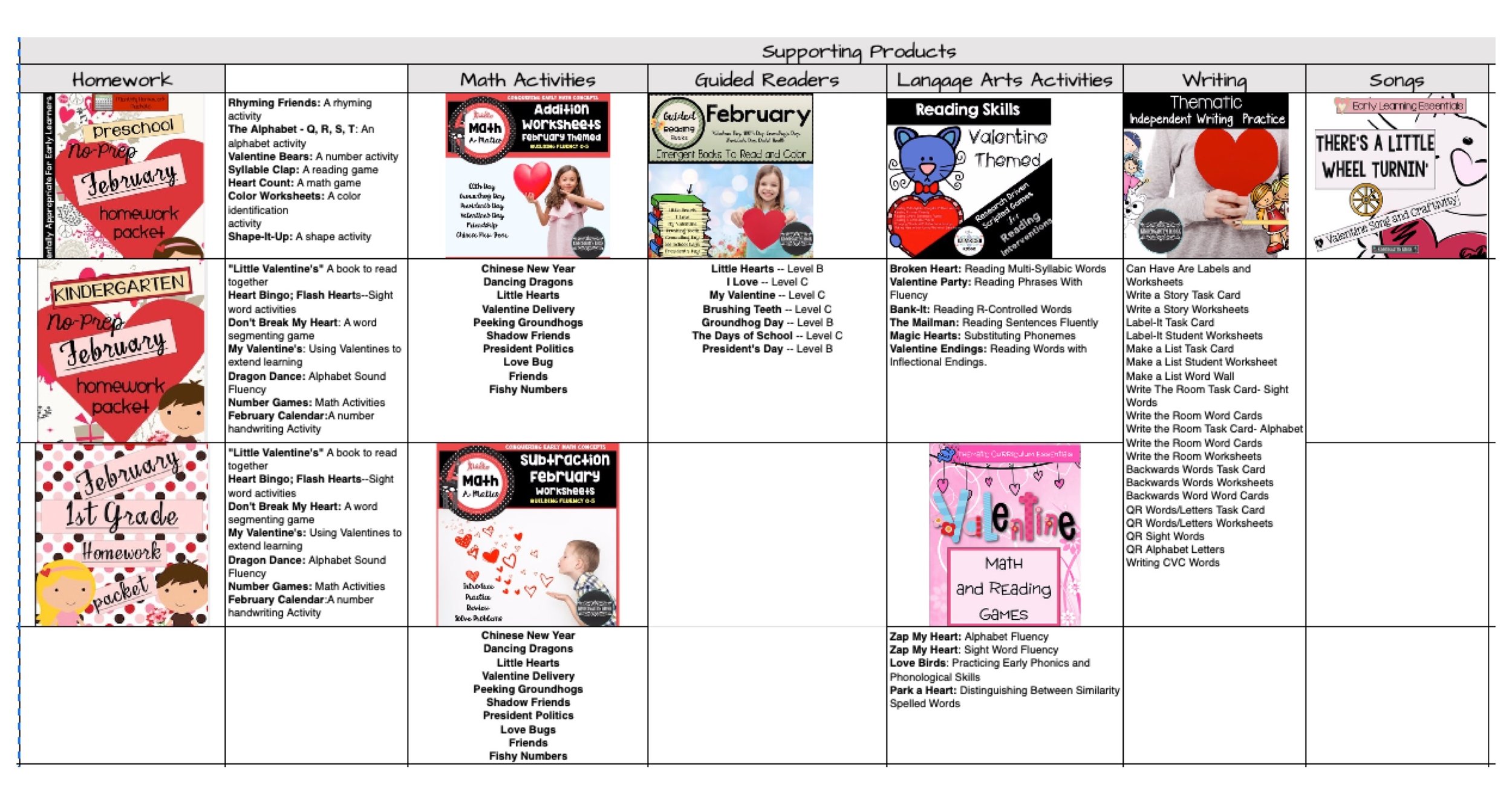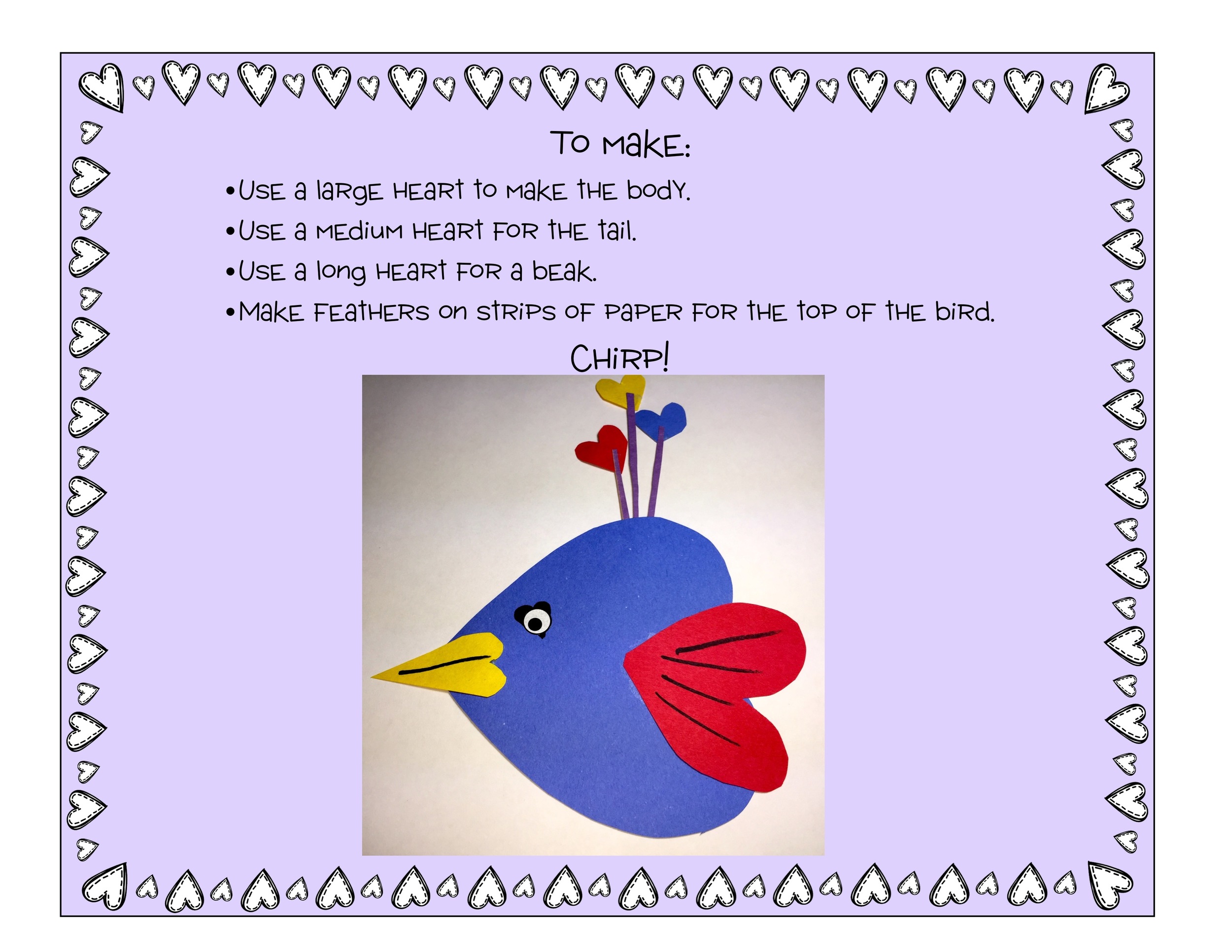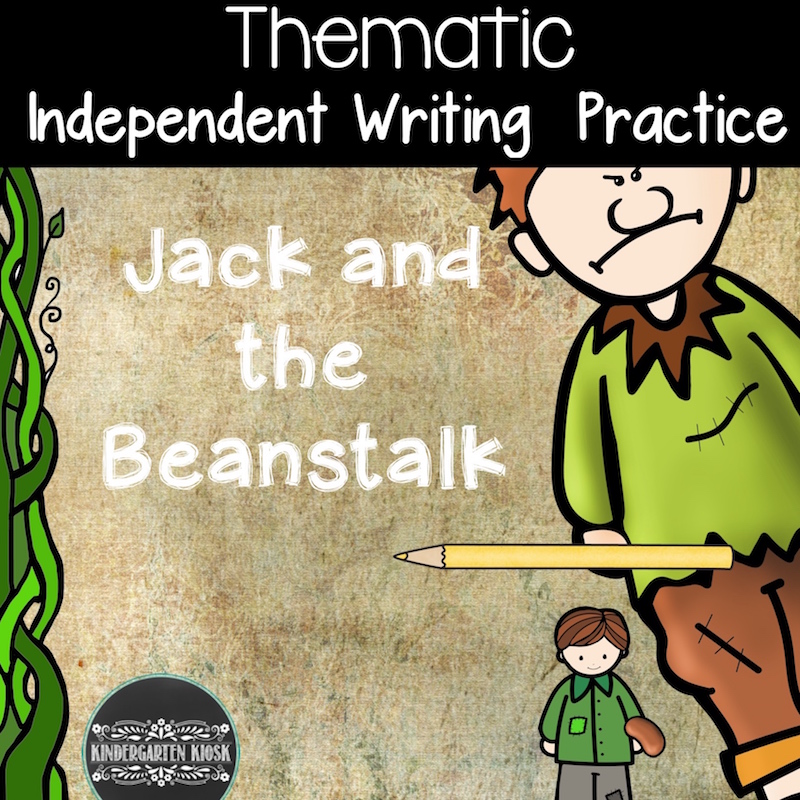It’s February
February is a month packed with opportunities for academic-fun-filled Thematic Learning! We have some great February-Themed materials that will make your planning a breeze. All activities are spread across the curriculum; math, language arts, guided reading, writing, art, songs, science, and social studies. Be sure to grab the guide below to help you plan a February your students will love, and a month of learning that you will love teaching!
Our activities are easy to prepare, teach, and store for years to come. Differentiated? Yes! Our thematic units have the development of a young child in mind.
Be sure to scroll pass the planning to see February in action in my classroom!
Kindness
I am a firm believer in teaching children that correct behavior is intrinsically rewarding. I feel when we, as early childhood educators, lean too heavily on external motivators (like stickers, candy, or prizes) we are missing out one of the most rewarding aspects of teaching young children — helping them learn that good behavior has it's own, internal rewards.
Teaching children to feel a natural sense of accomplishment when they finish a task or solve a problem should be one of the major goals of the kindergarten year, that is why I always take the time in February, with Valentine's Day in the air, to remind the students that ours is a classroom of kindness.
I begin talking about kindness by reading the story Rainbow Fish to my students. I've found it's a great way to teach children about empathy and to kick start their thinking about their own feelings and the feelings of others.
A great nonexample of kindness, is the book Meanies by Joy Cowley. I love to use this whole series as a way to discuss behavior with my students. Here is a video of Cowley herself reading Those Yucky Meanies that will give you an idea of how much fun these books are. After reading these books, we discuss what a "meanie" is and how misbehavior can cause people to act like "meanies". Another resource that I love to use in February is "I Care Cat" of the Peace Education Foundation. It has been shown that teaching young children social and emotional skills can decrease aggression and build empathy. I love this program. It is a simple and effective way to teach children how to self-manage conflict, care for and listen to each other, and be responsible. As children gain emotional strength, the classroom climate improves dramatically and behavior becomes more productive.
On the far left is a character study of a meanie. After reading the book several times, and then making the chart together, the students wrote their biography of a Meanie.
We painted meanies by first making a face and then painting their hair with a brush. We made their arms on a separate sheet, and then cut a slit in the body for the meanie to hold something disgusting like, old bubble gum or a dirty, painted plate.
The meanies leads to so many fun extensions and activities, and is a great transition into one of my favorite thematic units featuring bullies, giants, and trolls that live within the pages of great folk stories. (See below).
Valentines Day
One of my favorite Dramatic Play opportunities happens during February when I open the Valentine Post Office.
I purchased the postman costumes years (and years) ago from Lakeshore. They are adorable and consist of a jacket, a hat, and a mailbag. If you do not have costumes, you can find many templates for postal worker hats online and simply make your own as a headband or do the Post Office without costumes.
Next, fill the playhouse with TONS of writing paper. I have scraps of paper, paper cut as hearts, paper that is ran as cards, and so-on. Then add some markers, pencils, crayons, stamps, or anything else you can think of.
I then give the students one main rule: The post office is for writing letters! You can add pictures to finish your writing, but you must write first!
This is when my independent writing moves to a new level, as children's play supports their ability to write at more advanced skill levels.
While we celebrate our classroom relationships in the Valentine Post Office, we also focus on treating others with love and kindness. Around Valentine's Day our kindergarten traditionally schedules a field trip to a local senior citizen's center and sing songs to those who are there. The kids love this experience! The first year we did this, I couldn't help but get emotional as the young and the old bonded through this caring experience.
Familiar Tales
At the end of February I turn my attention to teaching familiar tales. I begin with one of my favorite books, Abiyoyo. Kindergarteners love this book with it's references to slobbery teeth, stinky feet, and dirty fingernails. There is also a short from Reading Rainbow that shows how the author came up with the story, which can be tied to CCSS.ELA-LITERACY.RI.K.6: Name the author and illustrator of a text and define the role of each in presenting the ideas or information in a text.
After Abiyoyo we move on to Jack and the Beanstalk as well as variations such as Jim and the Beanstalk, and Kate and the Beanstalk. These books are great introductions to the concepts of "big" and "small" (also know as measuring). Today we made cooperative BIG giants and posed for a SMALL version of us. These creations along with some stories about giants are proudly displayed outside of our door.
After Jack and the Beanstalk we move on to The Three Little Pigs. It is always amazing to find out just how many of my students have never heard this folktale, the thrill and excitement on those children's faces as they hear this story for the first time is always a delight. I use this story to teach story elements, author's purpose, and character study.
In February, I use the Three Little Pigs during guided reading lessons to teach reading strategies through a familiar and supportive story.
We practice sight words by shaking a little pig in an egg carton and writing down the sight word he lands on.
We practice decoding by drawing a little pig and reading his word. But watch out for the big bad wolf!
We make puppets to help retell familiar stories.
I change my dramatic play area so that children can use it to retell the familiar tale we are working on. Fulfilling CCSS.ELA-LITERACY.RL.K.2 With prompting and support, retell familiar stories, including key details.
After The Three Little Pigs, our classroom explores the story of the Three Billy Goats Gruff. Honestly, with so many wonderful stories available, like Goldilocks and the Three Bears, Red Riding Hood, and others, I have a hard time keeping myself from using familiar tales in my teaching all year long!
Mathematics
We are working on building an understanding of teen numbers. Teen numbers are tricky for children because, linguistically, they do not follow the pattern of later numbers. Although we will not officially discuss place value, we will build understanding of teen numbers as a set of ten and some ones. Double ten frames are a great tool for building this understanding, as are activities where children are requires to group objects in fives or tens.
In February I also spend time reviewing addition and subtraction within 5 to build fluency. I also focus on measurement this month as we discuss familiar tales. We measure with "giant feet" and "jack feet", and describe the measurable attributes of folk tale characters.
CCSS.MATH.CONTENT.K.MD.A.1
Describe measurable attributes of objects, such as length or weight. Describe several measurable attributes of a single object.
CCSS.MATH.CONTENT.K.MD.A.2
Directly compare two objects with a measurable attribute in common, to see which object has "more of"/"less of" the attribute, and describe the difference. For example, directly compare the heights of two children and describe one child as taller/shorter.
Literacy
I love using folk tales in February to teach the elements of story:
CCSS.ELA-LITERACY.RL.K.3
With prompting and support, identify characters, settings, and major events in a story.
Folk tales are also excellent for teaching comparing and contrasting, as there are so many versions of them available.
CCSS.ELA-LITERACY.RL.K.9
With prompting and support, compare and contrast the adventures and experiences of characters in familiar stories.
Phonics and phonemic awareness
My whole group phonics activities in February are focused on teaching digraphs and diphthongs. This is an important phonics skill that will help children as they become efficient readers.
Science
This month I have set up an ocean themed science center in my classroom. My sensory table has water in it, and an example of all of the different kinds of whales that there are for the children to observe. I have purchased a view finder from Lakeshore that has pictures of underwater life for the children to see. I also have some real example of ocean life: a starfish, a sting ray's jay, a sand dollar, a shark tooth, and a large collection of shells for the children to study. There is also a collection of ocean books to aid the children in their learning.



























